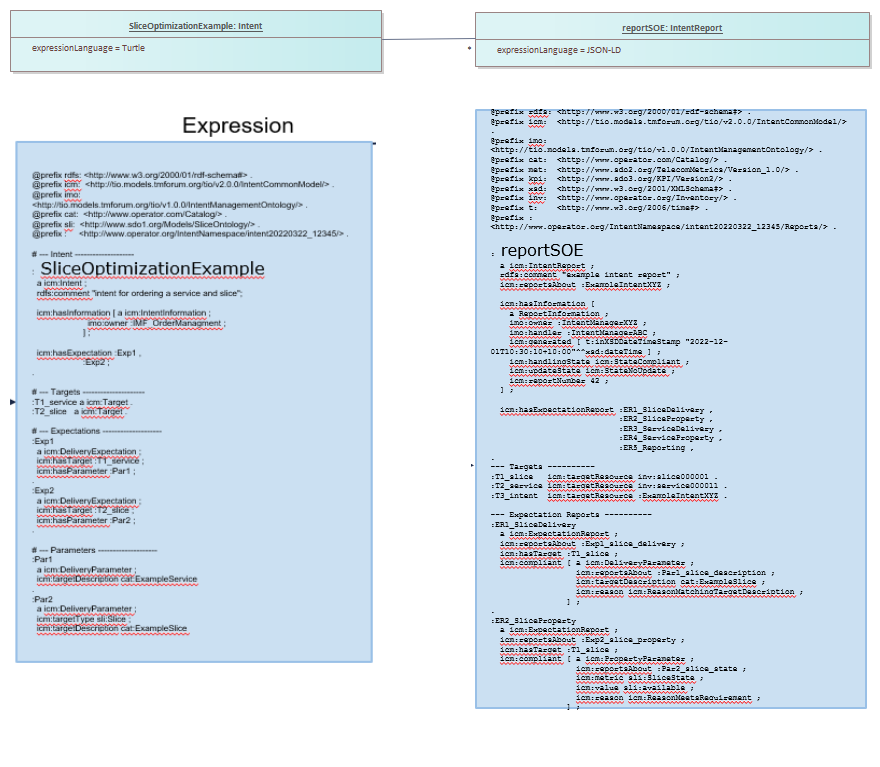Figure I.03 - Intent Example Two

|
Project:
|

Figure I.03 - Intent Example Two : Object diagram
Following is a second, more detailed intent example, with a focus on expressions:<br/><b>Intent Expression Example</b><br/>This example intent requires that two resources are delivered: a service called “ExampleService” and a slice called “ExampleSlice”. Both are specified through service descriptions in the operator's service catalog.<br/>The example first defines a set of prefixes for models used in the expression of this intent. Each model practically resides in its own namespace referred to by the prefix. The prefix also abbreviates long URIs by substituting their fixed portion into a short prefix string. This is a syntactic feature of Turtle, which enhances the human readability of model expressions. In this respect the string ":" is the shortest possible prefix. It is used in this example for the hypothetical operator's domain. All dynamic operational instances of intent management reside within this domain and its associated namespace. This is the sub-graph of all intent and its components.<br/>This example introduces a dedicated namespace referring to the catalog of the operator. This allows referring to entries in the catalog directly through IRI/URI. The example also postulates that there is an intent extension model specific to slice management and defined by an example standards defining organization called "sdo1“ (see sli prefix)<br/><br/><b>Intent Report Expression Example</b><br/>In this example intent report all expectations from the original intent are met and the system is therefore compliant to the intent.<br/>This example shows the intent report individual :IntentReport42. It is an individual of class icm:IntentReport. The property icm:reportsAbout states that it is a report for the intent individual :ExampleIntentXYZ.<br/>Using the icm:hasInformation property the report contains general information, such as the owner and handler of the intent, the timestamp of the report generation, the current handling and update states and the sequence number of this report.<br/>The report contains five expectation report individuals matching the five expectations in the intent. They are assigned to the intent using the icm:hasExpectationReport property.<br/>The intent report defines three targets corresponding to the targets of the intent. The intent did not specify a concrete resource for slice and service. The handler has however selected suitable resources and refers to them using the <b>icm:targetResource</b> property in its target definition.<br/>The expectation report :ER1_SliceDelivery corresponds to the expectation :Exp1_slice_delivery in the intent. The requirement is to deliver a service according to a description found in the catalog. This did steer the selection of a resource for the respective target. The expectation report confirms compliance and reports the description of the selected target resource. It matches the required one and this has established compliance. <br/>
|




